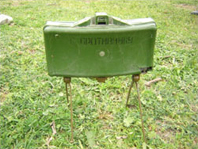|
What the Convention says- The Convention emphasizes that the States Parties are “determined to work strenuously towards the promotion of its universalization in all relevant fora.”
- In accepting the Convention, “each State Party undertakes to never under any circumstances:
- use anti-personnel mines;
- develop, produce, otherwise acquire, stockpile, retain or transfer to anyone, directly or indirectly, anti-personnel mines;
- assist, encourage or induce, in any way, anyone to engage in any activity prohibited to a State Party under this Convention.”
- It should be noted that “the Articles of this Convention shall not be subject to reservations.”
Progress made
164 States have ratified or acceded to the Convention. They include: - Most of the States that at one time used, stockpiled, produced or transferred anti-personnel mines.
- The majority of States that are or have been affected by anti-personnel mines.
- Every state in the Americas except Cuba and the United States.
- Every state in Sub-Saharan Africa.
The use of anti-personnel mines has decreased dramatically through adherence to the Convention and the widespread acceptance of its provisions by States not party.
The production of anti-personnel mines has decreased significantly: Of the 50 States that at one time produced anti-personnel mines, 34 are now bound by the Convention. Challenges that remain- 33 States have not yet ratified or acceded to the Convention.
- Combined, six of these States – China, India, the Republic of Korea, Pakistan, Russia and the United States – may hold tens of millions of stockpiled antipersonnel mines.
- Some States not party to the Convention have made new use of anti-personnel mines.
- Some armed non-state actors continue to use, stockpile, and produce anti-personnel mines.
|
STATUS OF RATIFICATION AND ACCESSIONS
To date, 164 States have formally agreed to be bound by the Convention.

The Convention defines an anti-personnel mine as “a mine designed to be exploded by the presence, proximity or contact of a person and that will incapacitate, injure or kill one or more persons.”
Claymore-type munitions (pictured above) are prohibited when these munitions are activated by a trip-wire (i.e., victim-activated).
They can lawfully be used in a command-detonated mode (i.e., when they are not victim activated). |


